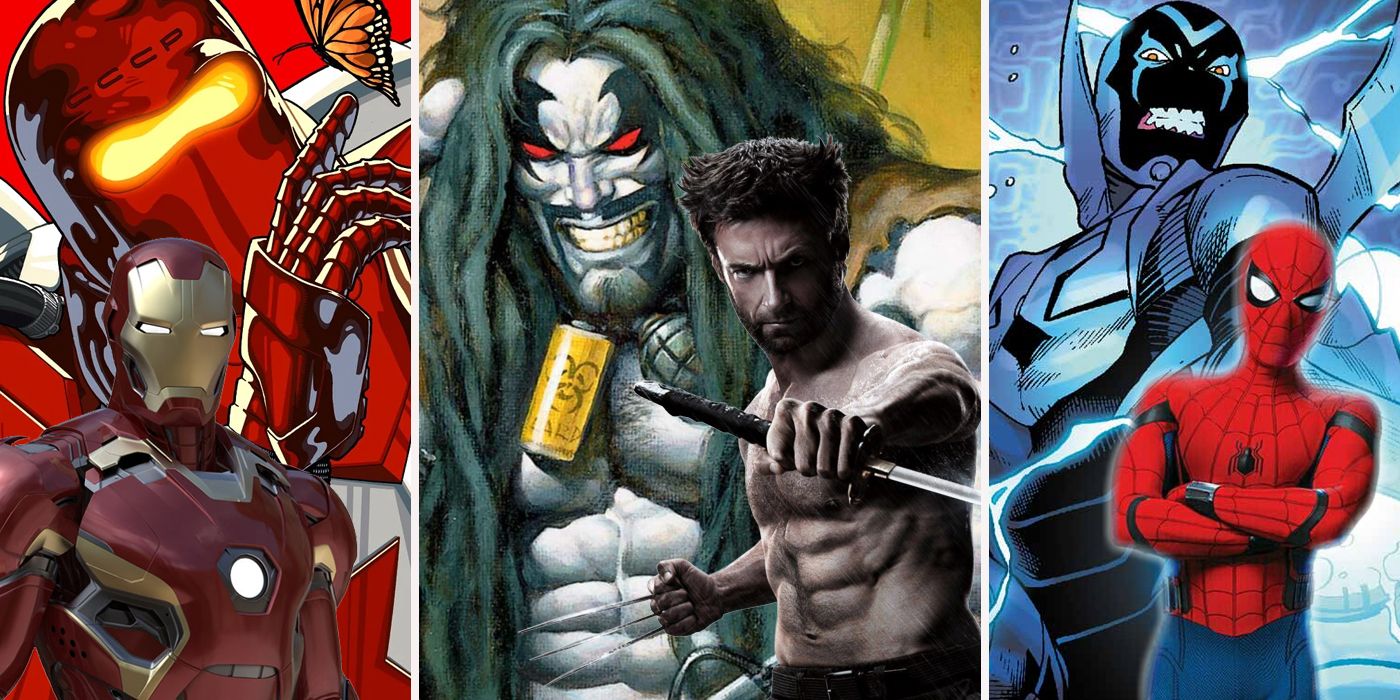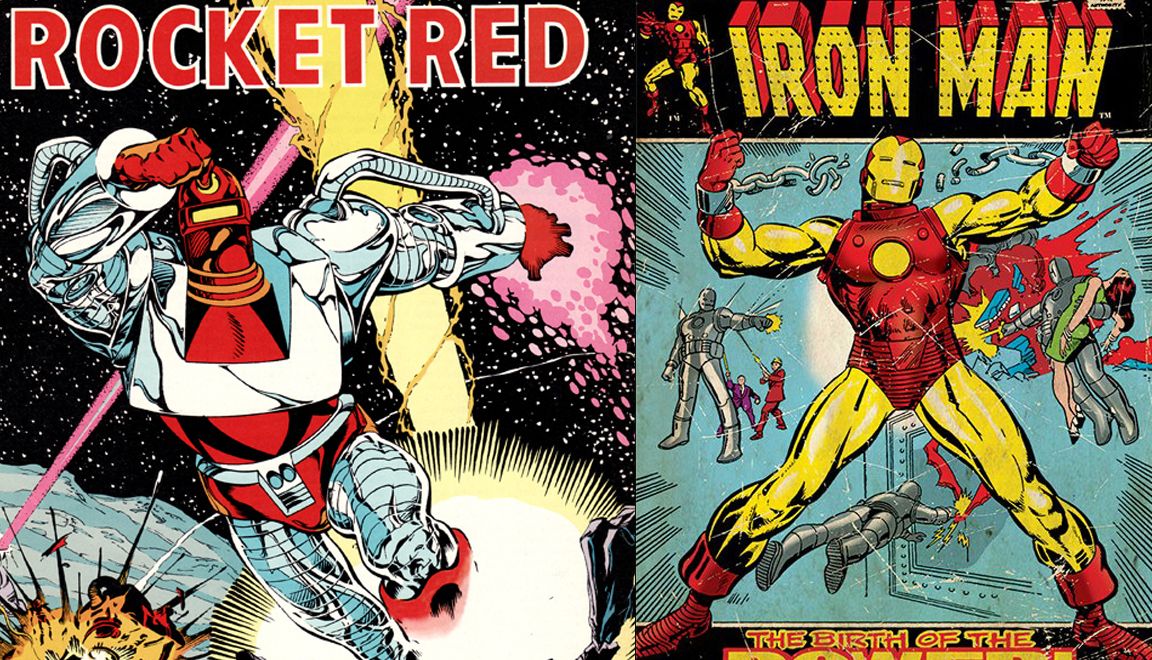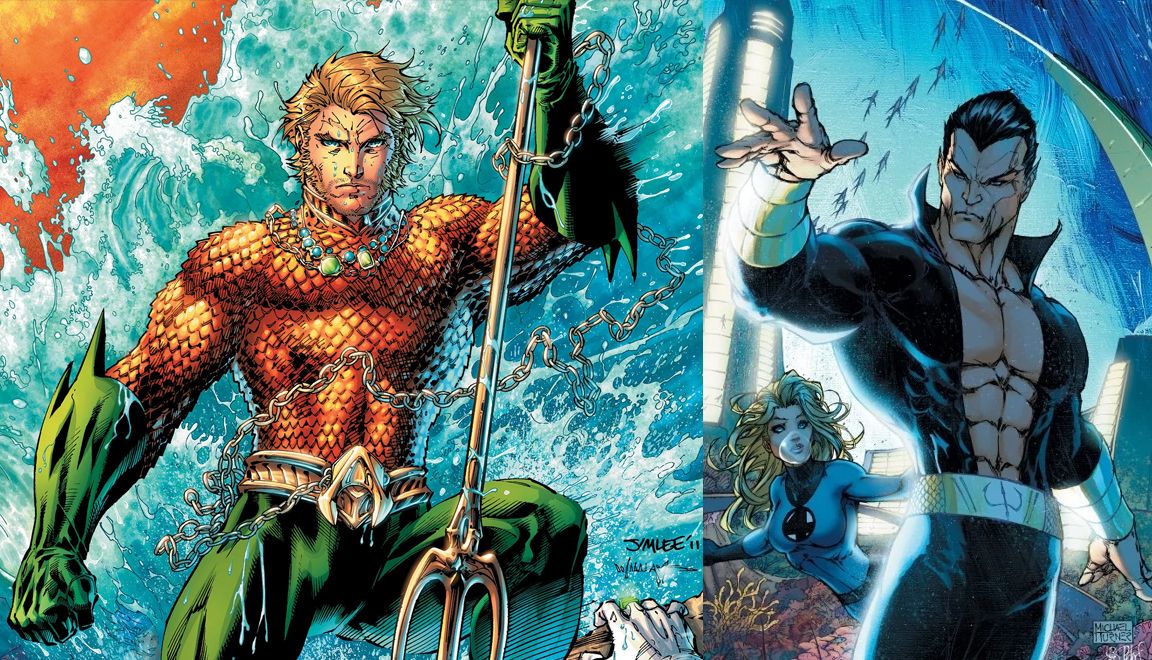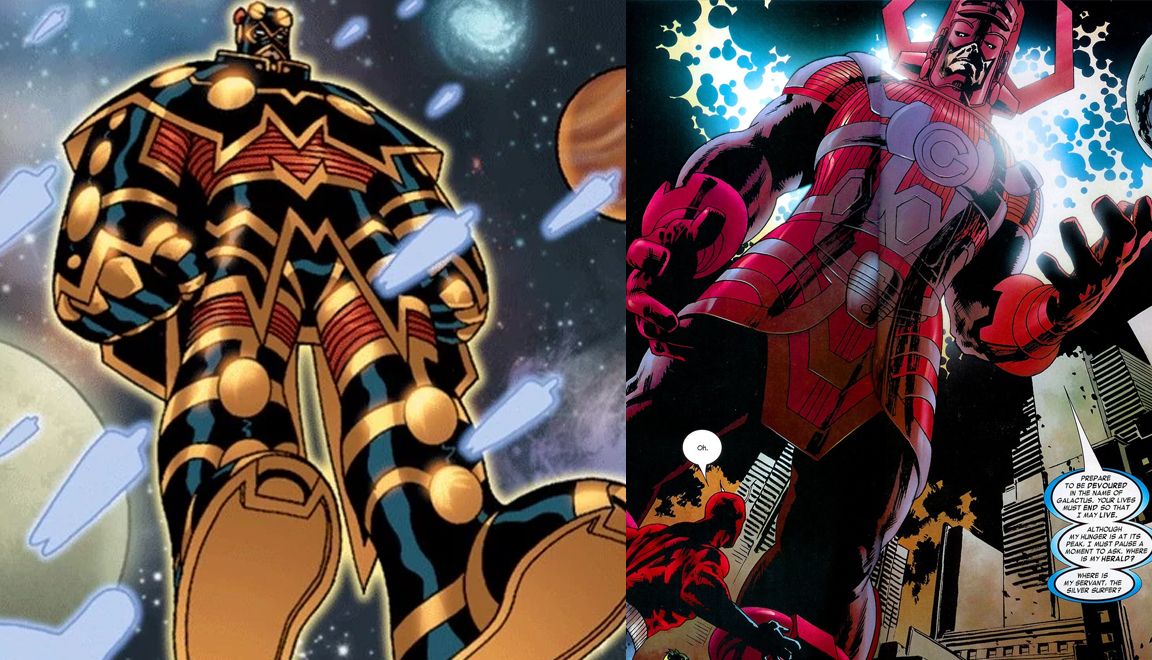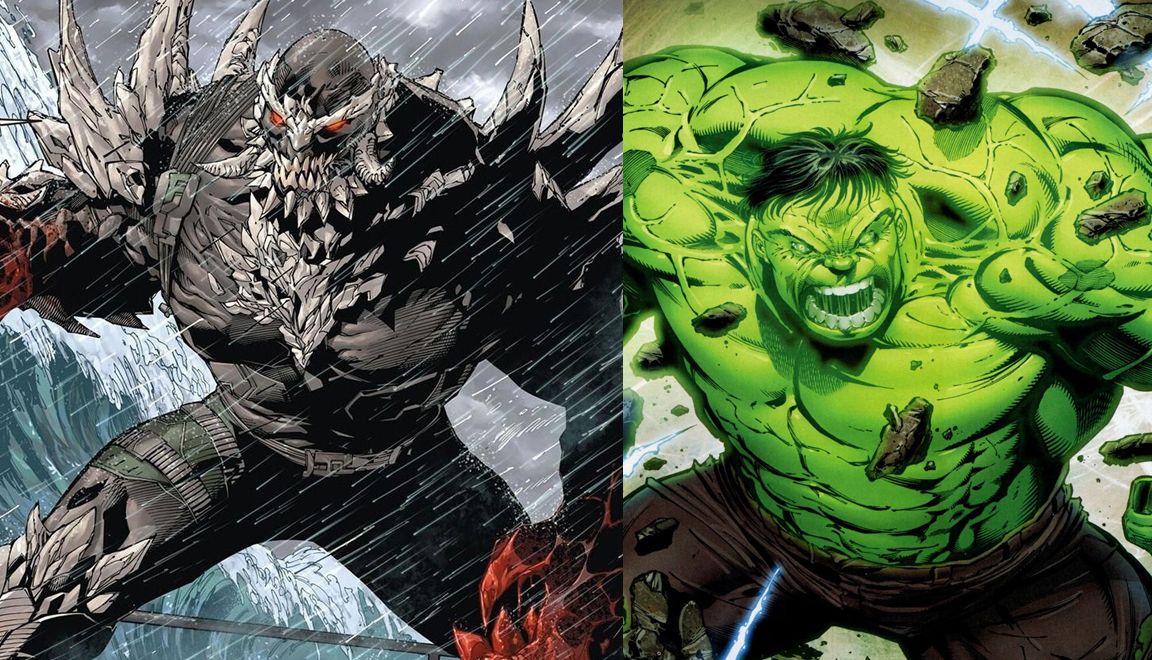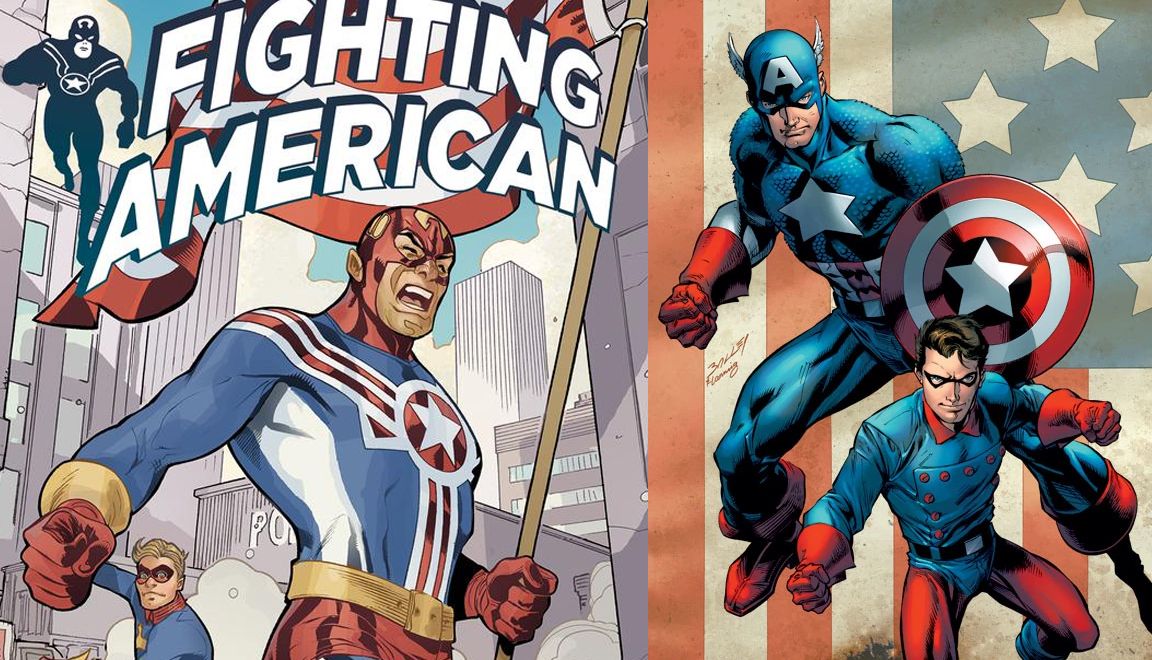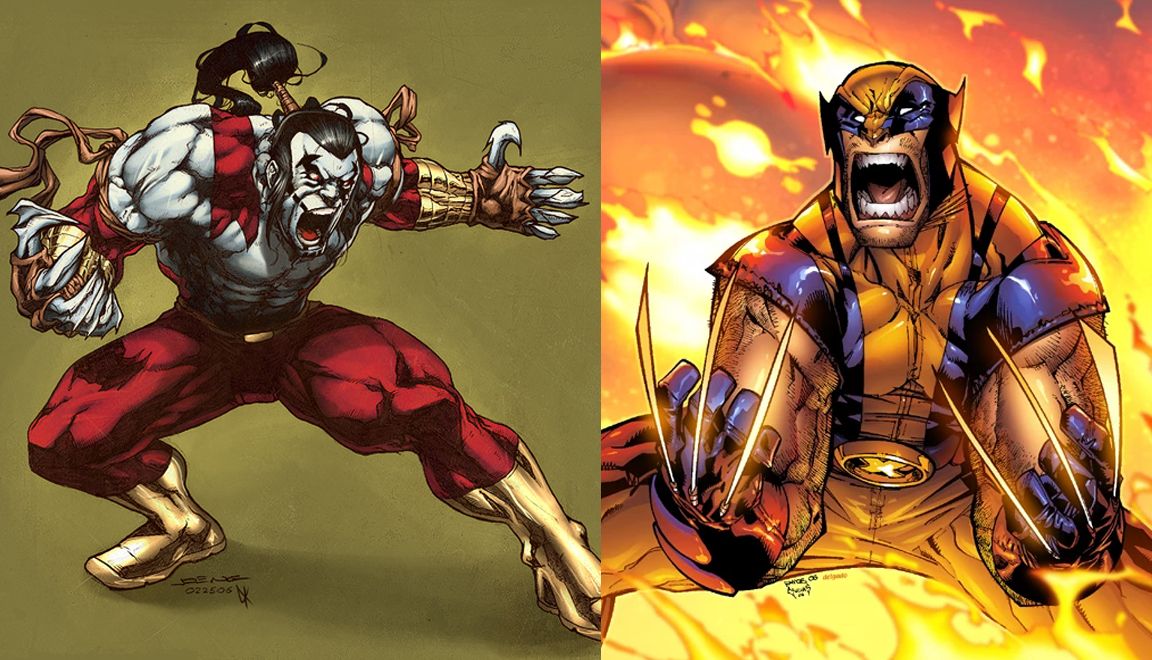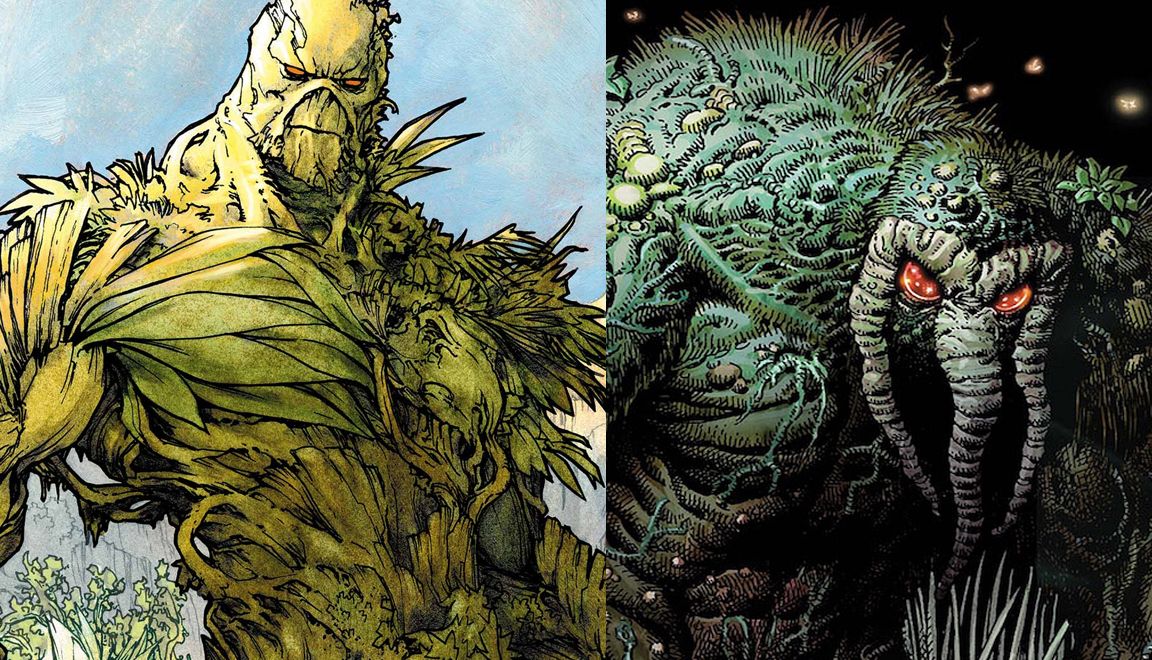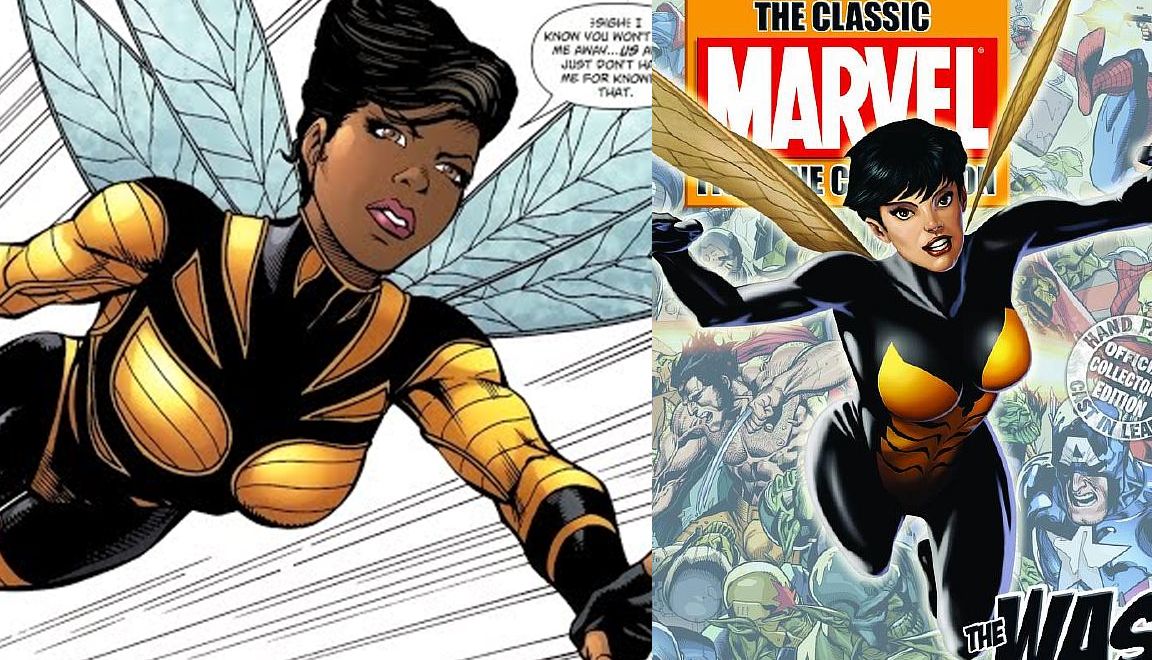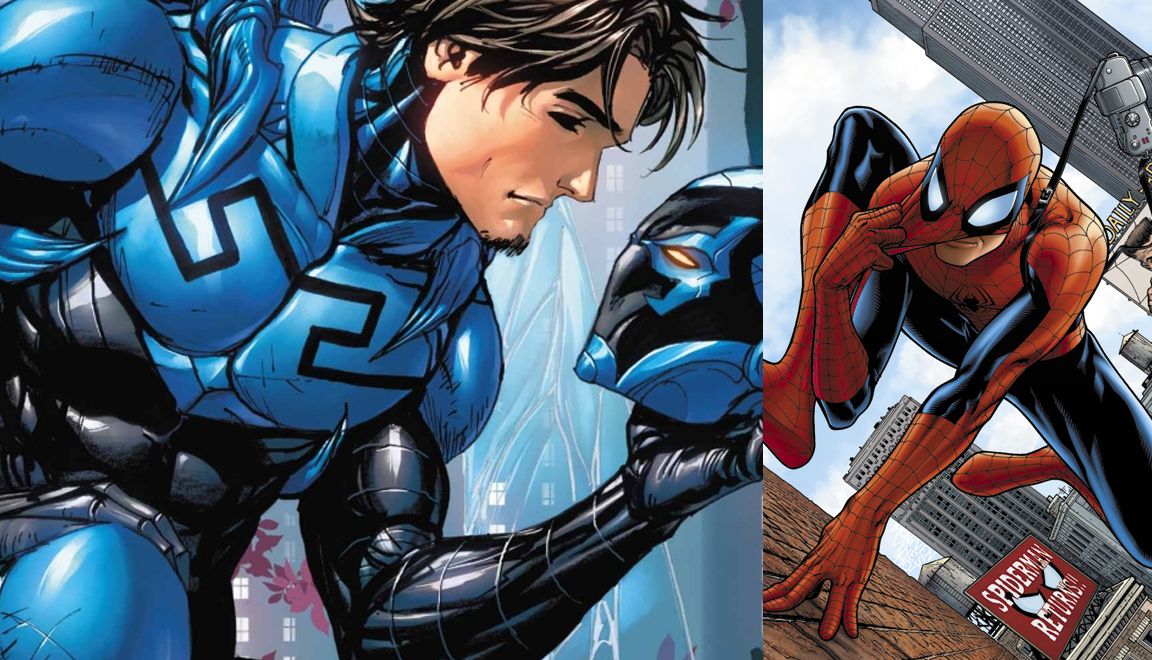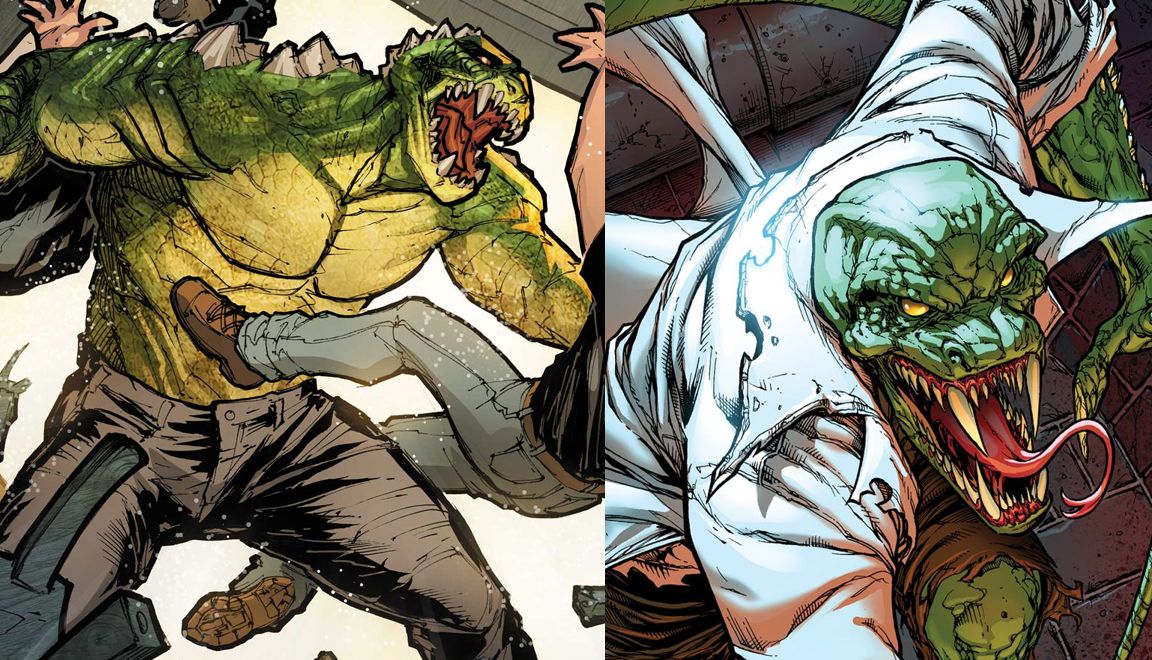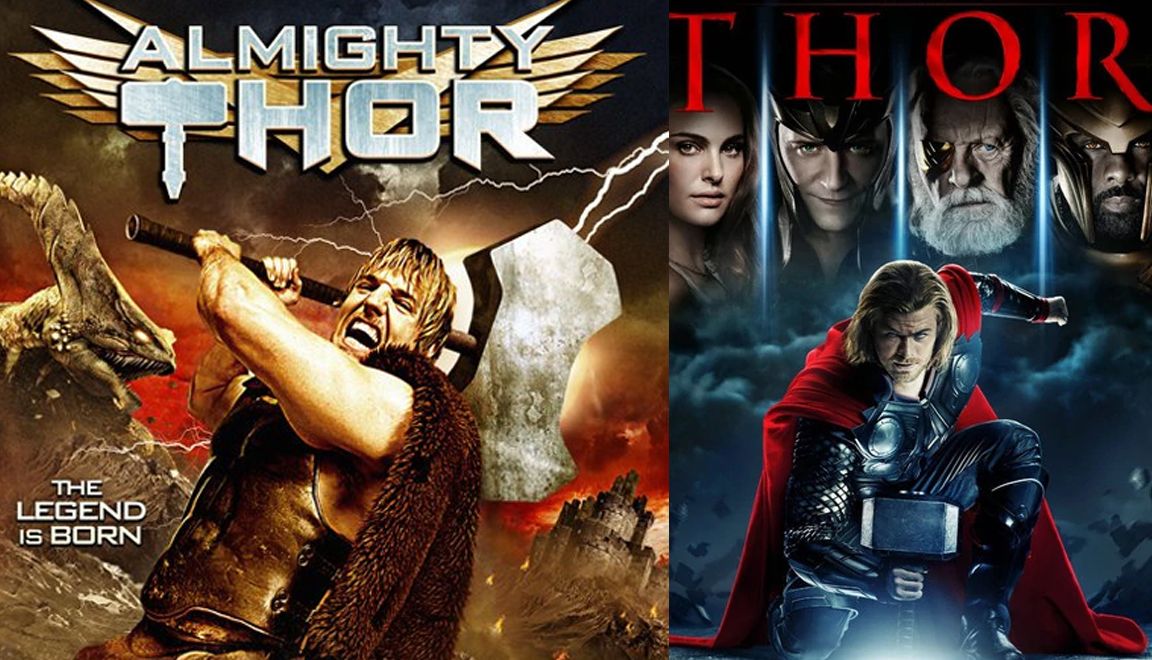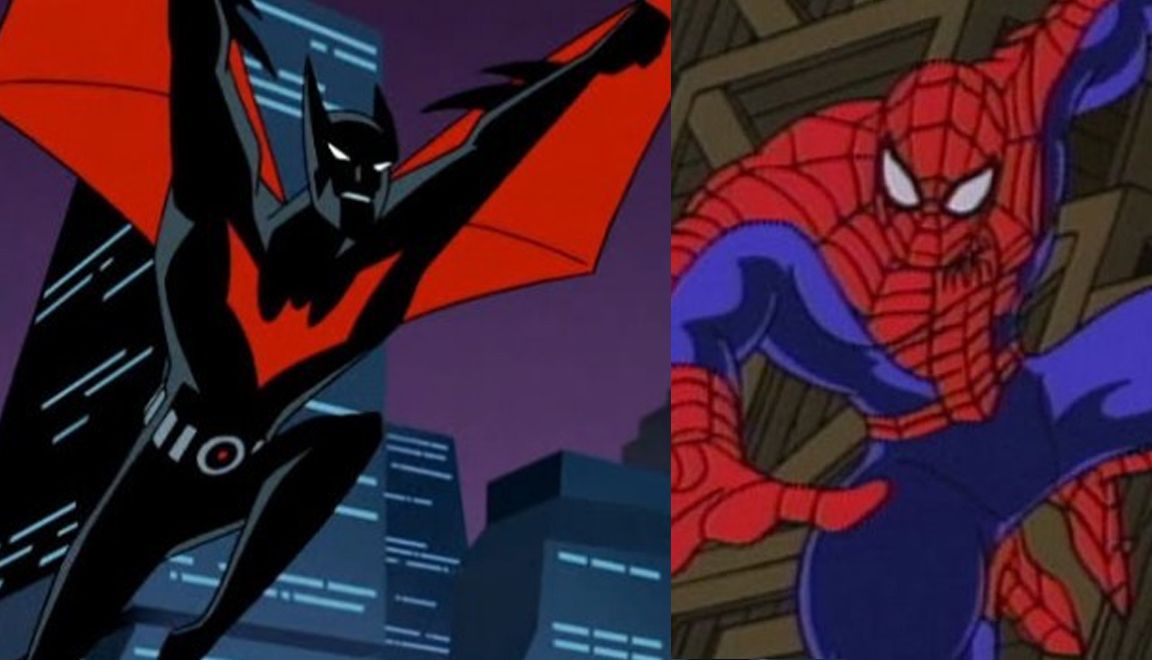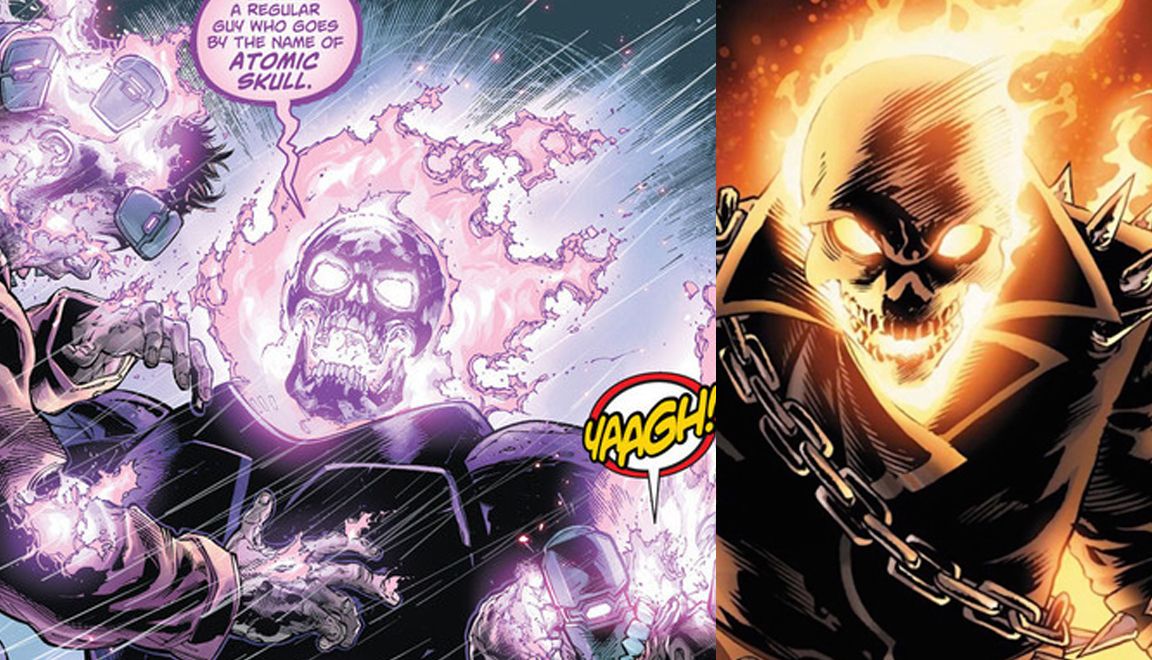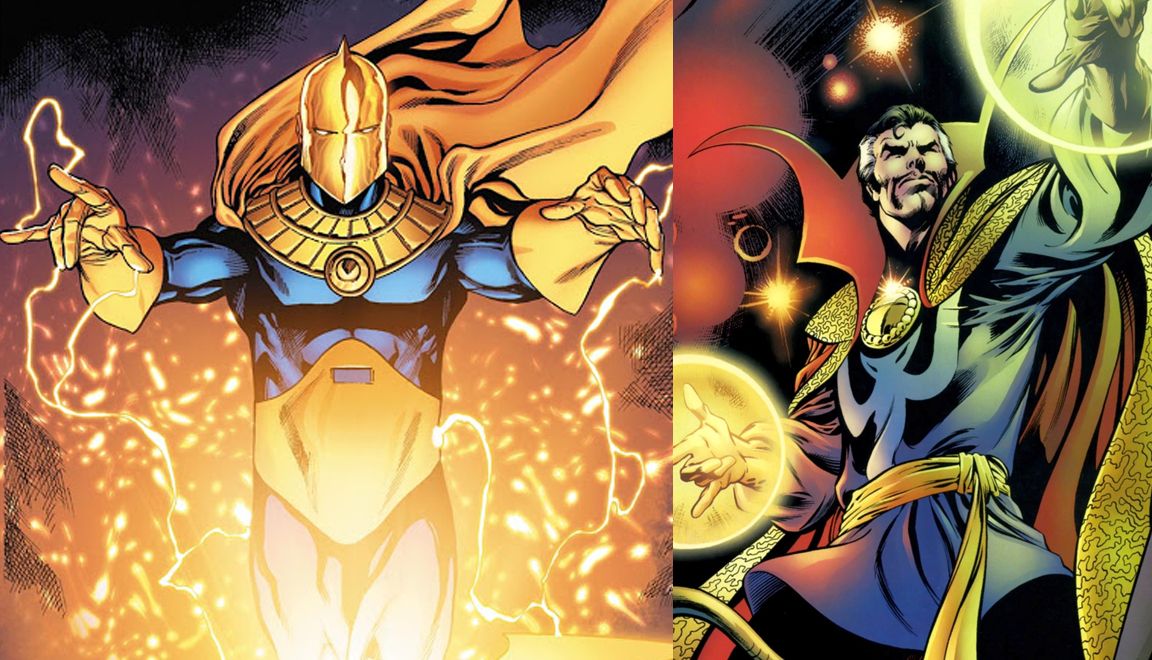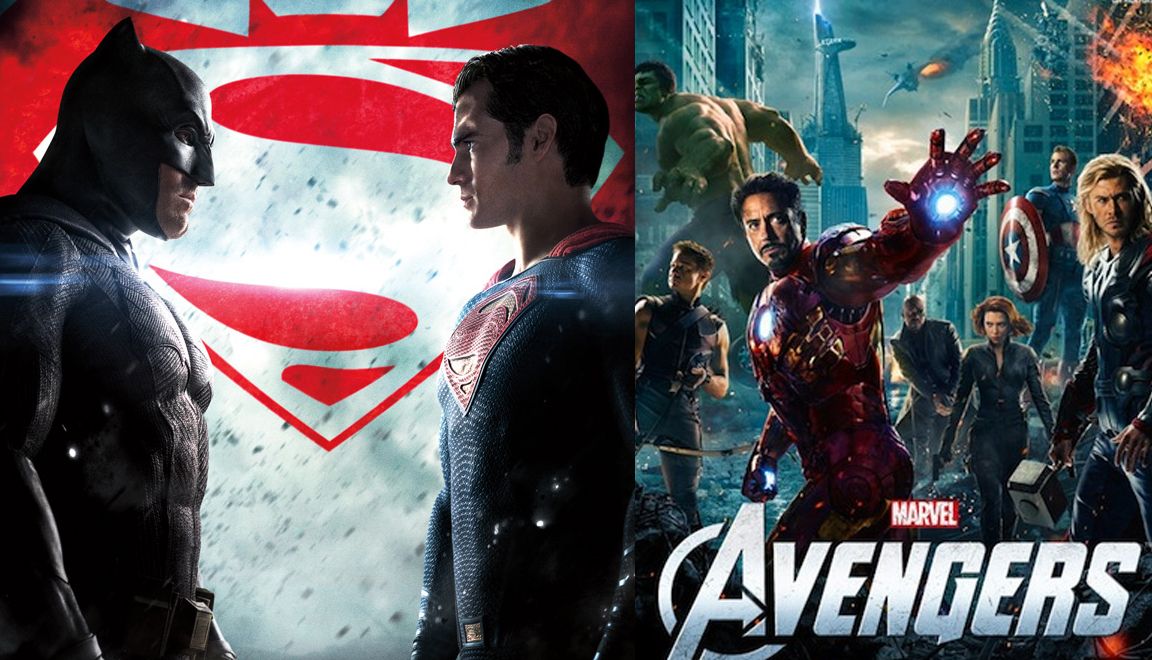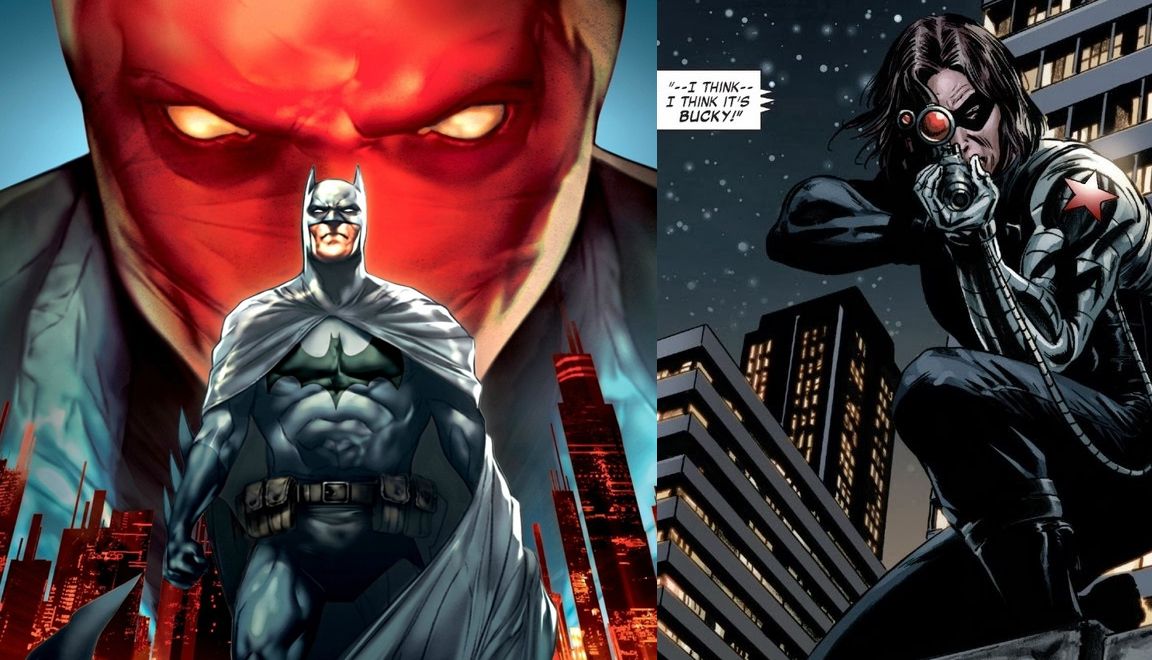Marvel has quickly become one of the most successful entities in Hollywood, with their most recent release Black Panther passing the $1 billion mark at the box office over the weekend.
While the success of Marvel Studios is still recent, the success of Marvel as a whole isn't really anything new. In the height of comic-book sales, Marvel would often dominate their target audiences with characters like Spider-Man and the X-Men. Understandably, some of Marvel's competitors tried to bank off of their success for their own personal gain.
Ripping-off comic-book characters wasn't unheard of during the height of comics, in fact it was actually very common. Copying characters from competing comic-books was a two way street for Marvel and DC.
While Marvel would regularly have their entities copied, they were no stranger to copying characters themselves. Marvel characters like Deadpool and Hyperion were both rip-offs of DC characters Deathstroke and Superman.
Marvel's success has been copied for decades, dating back to the '40s, and as recently as the last few years. Their success in comics, in TV, and in movies has been copied time and time again. This doesn't necessarily mean that Marvel was always the most successful in comics, but it seemed for the longest time that they were always doing something right.
It's no surprise that companies like DC and Image Comics saw this and wanted to try to take advantage of their success, often by copying Marvel almost beat-for-beat. Sometimes it worked, and sometimes it was just pathetic.
Here are The 10 Most Pathetic Attempts At Ripping Off Marvel (And 10 That Actually Worked).
20. Pathetic Attempt: Rocket Red (Rip-Off Of Iron Man)
While Rocket Red's look may seem original today, his entire design is essentially the spitting image of the original, classic Iron Man suit.
Rocket Red's alter-ego's character wasn't entirely similar to Tony Stark, as the role of the billionaire funding the super-team was already taken by Bruce Wayne, but the powers and abilities were almost exactly the same as his Marvel counterpart. Rocket Red first appeared in DC comics in 1987, 24 years after Iron Man's debut in 1963.
Understandably, the character of Rocket Red really didn't take off as well as DC hoped with their readers. While the character did last, he was mostly only a minor member of the Justice League.
The writers did try at numerous points to make his character more interesting, hoping readers would like him as much as Marvel's Iron Man, but no attempts managed to last.
19. Actually Worked: Aquaman (Rip-Off Of Namor)
When you think of the King of Atlantis, it's likely that the first name that comes to mind will be Aquaman. While Arthur Curry may be the first to come to mind, he wasn't the first to appear in comics.
The first comic-book Atlantean King was actually Marvel's Namor, who appeared in 1939, whereas DC didn't create Aquaman until 1941.
Aquaman became more successful than his Marvel counterpart, becoming a main member of the Justice League, whereas Namor was not as popular for Marvel, and thus became a character who secluded himself in Atlantis.
To this day, the only one of the two to appear in a live-action movie is Aquaman, who appeared in Batman v Superman and Justice League. While there was an Easter egg hinting at Namor in Iron Man 2, there have been no signs of Marvel's Atlantean King appearing at any point in the Marvel Cinematic Universe.
18. Pathetic Attempt: Imperiex (Rip-Off Of Galactus)
Galactus has been one of the most prominent villains in all of Marvel comics. This enormous cosmic entity vows to destroy each world he comes across, and has been one of the biggest threats for both the Avengers and the Fantastic Four.
It took DC around 34 years to realize how great of a character Galactus was for Marvel comics before they decided to make their own version of the cosmic villain. Their solution: Imperiex.
Imperiex, who was almost identical to Galactus in his size, abilities, and aspirations, first appeared as a Superman villain before becoming the lead villain in the crossover-arc Our Worlds At War.
While he was a powerful foe for the DC heroes, he just wasn't as interesting, as most readers had already seen the same story countless times from Marvel. This was one villain that really didn't manage to take off for DC.
17. Actually Worked: Doomsday (Rip-Off Of Hulk)
Before going too far into this example, it should be noted that Hulk himself was originally a rip-off of the DC character Solomon Grundy. That being said, 30 years after Marvel created Hulk, DC ripped-off their own ripped-off character with the creation of the supervillain Doomsday.
Doomsday was a lab-experiment gone wrong in an attempt to create a more perfect, invulnerable human, much like Hulk's origin. Also like Hulk, Doomsday grows stronger the more he fights.
The only difference here is that Doomsday grows stronger by adapting and evolving, whereas Hulk grows stronger from increased anger. Even the color of Doomsday is reminiscent of Hulk, since Hulk's original skin tone was gray.
While DC did change quite a bit of Doomsday, mostly by making him a villain rather than a hero, there's enough evidence to show that the DC antagonist was at least "inspired" by Marvel's green giant.
16. Pathetic Attempt: Guardian (Rip-Off Of Captain America)
There have been numerous rip-offs of Marvel's patriotic super soldier, but the most notable of them all must be DC's Guardian. Guardian made his first appearance in 1942, just one year after Captain America.
The biggest difference between the two characters is that Guardian originally had no abilities besides his indestructible shield, whereas Captain America had his super strength.
Just like Prize Comics' Fighting American, Guardian was also created by Captain America creators Joe Simon and Jack Kirby. Simon and Kirby realized the formula of Captain America worked well, and supposedly decided to try him out on numerous different platforms.
Of course, none of them worked as well as the original Captain America, who is still one of Marvel's most popular heroes to this day. It would seem Guardian and Fighting American failed to live up to their original.
15. Actually Worked: Lobo (Rip-Off Of Wolverine)
Lobo was DC's answer to Wolverine, but they were not as focused on his abilities. Instead, Lobo was almost identical to Logan in personality, being a gritty mercenary who was rather sick of life. He first appeared in DC comics as a villain in the '80s, but unfortunately he did not take well with the readers.
In the '90s, the writers at DC revamped Lobo, making him an anti-hero who parodied of some of Marvel's grittiest characters and stories, with most of the focus being on parodying Wolverine.
Lobo has become somewhat of a fan favorite character for DC, being one of their darkest characters to date. While he hasn't appeared in any live action movies just yet, rumor has it that Warner Bros. and DC are finally planning on giving the anti-hero his own movie, with Michael Bay being eyed to direct.
14. Pathetic Attempt: Fighting American (Rip-Off Of Captain America)
When you hear the name Captain America, it's likely that you think of a patriotic superhero who fights for truth and justice, and whose arch-nemesis has a skull-face. However, Captain America is not the only character who fits this description.
Prize Comics created an almost identical hero to Captain America during the '50s. Not only was the primary villain almost identical to Captain America's villain Red Skull, only with a darker colored skull, but his sidekick was oddly familiar as well, looking almost exactly like the classic Bucky Barnes.
The story behind this character is actually rather interesting. During the '50s, there was a brief period of time when Marvel writers Joe Simon and Jack Kirby jumped ship from Marvel and started writing for Prize Comics.
Considering that they were the creators of Captain America, it is understandable that they'd pick up where they left off, but only changing the names.
13. Actually Worked: Bane (Rip-Off Of Nuke & Crossbones)
DC created the Batman villain Bane in the early '90s, following the creation of Nuke and Crossbones by Marvel in the late '80s. While it's unclear which of the two characters Bane was based on most, there is plenty of evidence to claim that Bane is a rip-off of both Marvel villains.
His abilities and origin are most similar to Nuke, who was made in a lab using chemicals and drugs like steroids to boost up his strength. Crossbones, on the other hand, has similar abilities to both Nuke and Bane, but his mask design is almost identical to that of Bane.
It's safe to say that of the three characters, Bane has been the most successful. Bane has had two live-action iterations over the years, whereas Nuke has appeared as a minor villain in both seasons of Jessica Jones and Crossbones and was also a minor villain in the later two Captain America movies.
12. Pathetic Attempt: Ripclaw (Rip-Off Of Wolverine)
The fact that "Ripclaw" sounds like "rip-off" may or may not be a coincidence. Image Comics first created Ripclaw in 1992, and his similarities to Wolverine are uncanny. Not only does he have razor-sharp claws like Wolverine, but he was also created in a government lab experiment, has some anger issues, and has a healing factor.
The only real difference between these two characters is that Ripclaw's Native American background give him a link to the spirit world. Take that away, and Ripclaw is essentially Wolverine with KISS make-up on.
Ripclaw first appeared in October 1992, one month after the X-Men animated series began airing. It's very likely that Image was just trying to ride off of the success of the TV series when they created this new character, hoping they could attract X-Men fans to read their comics.
11. Actually Worked: Swamp Thing (Rip-Off Of Man-Thing)
First off, the actual origins of these characters is as murky and unknown as the swamps that they live in. DC's Swamp Thing and Marvel's Man-Thing were each created and published within a month of each other.
While Man-Thing did release first, there is not enough evidence to determine which idea was created originally. While most people assume that Swamp Thing was the rip-off, the numerous heads of DC over the years avidly deny these claims, saying that it was all just a coincidence.
Both Swamp Thing and Man-Thing have been very successful since their creation in 1971, so it's safe to say that neither of them has surpassed the other. Both of them have even received their own movies, with Swamp Thing releasing in 1982 and Man-Thing in 2005.
10. Pathetic Attempt: Bumblebee (Rip-Off Of Wasp)
In terms of winged, bug-like, female superheroes that dress in yellow and black, Marvel's Wasp is undoubtedly the most familiar. She was one of the founding members of the Avengers and will co-star in this summer's Ant-Man and the Wasp following her supporting role in Ant-Man.
On the other side of the table, DC's Bumblebee was not met with nearly as much success, becoming not much more than a minor member of the Teen Titans.
Wasp was first created in 1963, whereas Bumblebee wasn't created until 1974. While the height of Bumblebee's run was in the Teen Titans animated series, there is a chance that we may finally see a live action version of the superhero in the upcoming live-action Teen Titans series later this year.
9. Actually Worked: Blue Beetle (Rip-Off Of Spider-Man)
The history of the character Blue Beetle is complex, as the original incarnation of the character was first made by FOX Comics in 1939. However, the character was sold a number of times, eventually being purchased by DC in the early '80s.
While the original versions of Blue Beetle were not very similar to Spider-Man, who was first created in 1962, the DC version of the character was strikingly similar to Marvel's web-slinger.
Not only are they both bug-like heroes, but the backstory and characteristics of DC's Blue Beetle are very similar to those of Peter Parker. While Blue Beetle never got close to the success of Spider-Man, he still became a very popular character for DC, and still is to this day.
8. Pathetic Attempt: Leonard The Duck (Rip-Off Of Howard The Duck)
Leonard the Duck was a character who appeared in Eclipse Comic's Destroyer Duck comics, which was written by former Marvel writer Steve Gerber with the help of Jack Kirby.
Gerber created the character Howard the Duck six years prior, while working for Marvel. Gerber didn't try to rely on being subtle when creating Leonard the Duck, making him completely identical to Howard in appearance and characteristics.
At the time, Gerber was in a legal fight with Marvel for the rights and ownership of Howard the Duck, who was one of his favorite creations. It is likely that Gerber originally intended to use Howard in Destroyer Duck, but due to the legal issues was unable to upon publication.
Howard the Duck went on to have his own live-action movie, and appeared in both Guardians of the Galaxy movies, while Leonard the Duck went on to have a very short-lived career.
7. Actually Worked: Killer Croc (Rip-Off Of The Lizard)
The Lizard was first created as a Spider-Man villain in 1963. He was a scientist who turned into a large, reptilian monster that posed a threat to Spider-Man on a number of occasions, even appearing as the main villain in 2012's The Amazing Spider-Man.
In 1983, DC followed suit by creating the Batman villain Killer Croc. Like The Lizard, Killer Croc was also a human that became a large reptilian monster, posing a threat for one of the most popular superheroes in their comics.
Over the years, Killer Croc has arguably surpassed The Lizard, becoming one of the most famous Batman villains in the comics. On top of that, the make-up done on Killer Croc in Suicide Squad played a major part in winning the movie the Academy Award for Best Make-Up in 2017. This is quite the achievement for a "rip-off" character.
6. Pathetic Attempt: Almighty Thor (Rip-Off Of Thor)
Comics haven't been the only things ripped-off from Marvel-- the movies have been as well. One of the most notable attempts to rip-off a Marvel movie has been Syfy's Almighty Thor, which aired on May 7th, 2011, just one day after the U.S. release of the live-action Thor.
The plot follows a young Thor who teams up with a Valkyrie to defeat Loki, who has taken the Hammer of Invincibility and ended the life of Thor's father.
Both the reviews and reception of Almighty Thor were atrocious, as the movie was indisputably horribly made. The fight and death scenes were all horrible, and the acting and effects were arguably even worse.
The movie wasn't nearly as entertaining or successful as Thor, and it certainly did not help Syfy's already disreputable track record.
5. Actually Worked: Batman Beyond (Rip-Off Of Spider-Man: The Animated Series)
Following the success of the animated Spider-Man TV series in the '90s, the team at Warner Bros. decided to follow suit by creating a similar formula with their own series Batman Beyond.
Instead of following the classic adult Bruce Wayne like most Batman series in the past did, Batman Beyond was set in the distant future and starred 16 year-old Terry McGinnis, who became the new Batman.
This was extremely similar to the Spider-Man series, as both of them followed a teenage superhero fighting crime as each of their respective comics' most popular superheroes.
It's difficult to dispute which show ultimately became the most successful, so it's safe to say that each series was fantastic in their own right. This was undoubtedly a rip-off of Marvel that actually worked.
4. Pathetic Attempt: Atomic Skull (Rip-Off Of Ghost Rider)
Ghost Rider has always been one of Marvel's most successful anti-heroes since his first appearance in 1972. Whether it was his flaming skull for a head, or the impressive motorcycle that he rode, something seemed to click for Marvel's readers.
DC took notice of this and created their own version of the character in 1978. Atomic Skull was much like Ghost Rider in abilities and appearance, simply having the flames around his head be colored purple or green instead of Ghost Rider's orange.
At times, Atomic Skull has even been shown with a motorcycle, in case the connections between the characters weren't already clear.
Rather than being an anti-hero like Ghost Rider, Atomic Skull was almost always depicted as a villain. Unfortunately, Atomic Skull never seemed to click with readers the way Ghost Rider did, and rarely appears as more than a background character in DC's comics today.
3. Actually Worked: Doctor Fate (Rip-Off Of Doctor Strange)
Whether or not DC's Doctor Fate was actually a rip-off of Doctor Strange is disputable, as Doctor Fate's first appearance was in 1940, 23 years before Doctor Strange's first appearance in 1963.
The catch is that Doctor Fate was never more than a background character for DC before Doctor Strange was created. Once Doctor Strange became a hit for Marvel, DC started giving stories to Doctor Fate, hoping that Marvel's readers would read about Doctor Fate as well, and they were right.
Doctor Fate actually became quite the hit for DC. While he isn't as well known today as he was during his height in the '60s and '70s, Doctor Fate used to be a well-known name in the comic-book world, at times being more successful than Doctor Strange himself.
Had Marvel not created their Sorcerer Supreme, it's likely that Doctor Fate wouldn't have made any appearances after the '60s.
2. Pathetic Attempt: The DCEU (Rip-Off Of The MCU)
Talks of a live-action Justice League have been around since the 1990s, but it wasn't until the success of the Marvel Cinematic Universe that plans actually began to move forward.
Warner Bros. and DC realized how successful the MCU had become, with The Avengers making over $1.5 billion at the box office. As soon as Warner Bros saw that it was possible to succeed, the DC Extended Universe was born.
Instead of planning their cinematic universe out for years like Marvel had done, DC notoriously rushed the introduction of their characters, making movies like Batman v. Superman: Dawn of Justice and Suicide Squad into critical failures.
While both movies raked in quite a bit of dough at the box office, they still didn't live up to their Marvel competitors. The disappointing reception of last year's Justice League was rumored to be the final straw for Warner Bros., which may lead to the cancellation of many of the DCEU's future movies.
1. Actually Worked: The Red Hood Plot Twist (Rip-Off Of The Winter Soldier Plot Twist)
One of the most famous moments in DC's history was the revelation of former-Robin Jason Todd as the new Red Hood in 2003.
This iconic moment in DC history was released around the same time as the Winter Soldier comic arc, where Captain America realized that his newest foe was actually his deceased childhood buddy and former sidekick Bucky Barnes.
While the Red Hood twist was arguably the more famous of the two comic-book moments, the revelation of Bucky as the Winter Soldier actually came first, and DC simply tried to follow suit with their even more shocking twist.
Long term, the Winter Soldier twist is now likely the most famous, as Captain America: The Winter Soldier was almost entirely based on this comic arc. Nevertheless, the Red Hood twist was still a huge success for the writers at DC, and hopefully we will see it in a future movie.
---
Can you think of any other pathetic attempts at ripping off Marvel? Can you think of any that worked? Sound off in the comment section!

